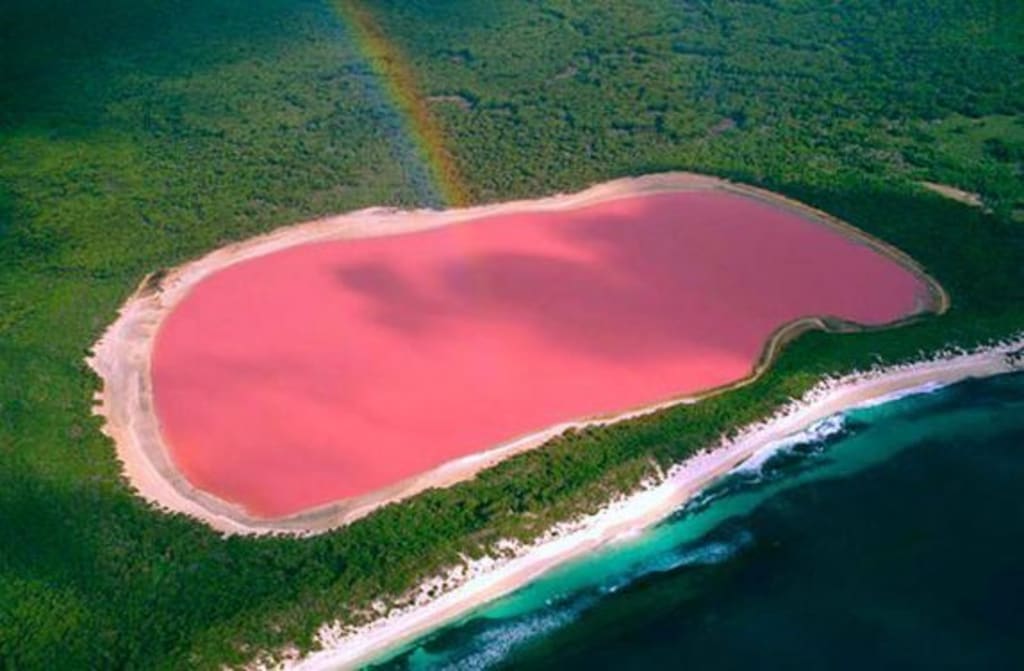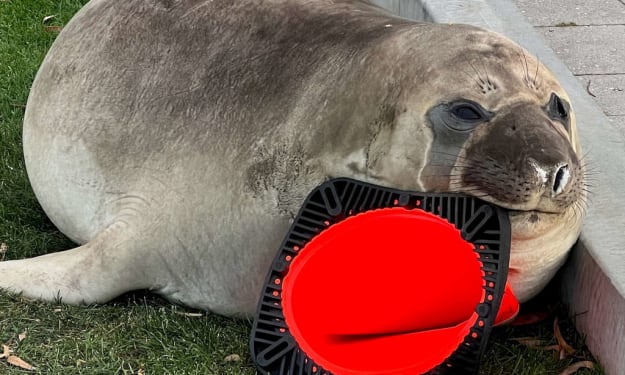Where in the World is The Bubblegum Lake?
This lake looks more like a vivid painting rather than a wonder of nature

In this week’s installment of Where in the World, we are visiting what has become known as “The Bubblegum Lake”.
Lake Hillier is referred to as Bubblegum Lake due to its bright pink color. Picture a strawberry milkshake or the stomach medicine Pepto Bismol and you can understand why this lake has been a spectacle since its discovery.
History
This natural wonder is located on Middle Island, the largest island in the Recherche Archipelago in Western Australia. The first documented discovery of the lake is from the diaries of British explorer Matthew Flinders in 1802.
Middle Island is an uninhabited nature preserve covered in forests of eucalyptus. The islands themselves were first mapped by Flinders, who was the captain of the HMS Investigator. After coming ashore, Flinders climbed the highest peak on the island, which was named after him. As he overlooked the island from his high vantage point, he was surprised to see “a small lake of a rose color”.
He decided to name the body of water Lake Hillier, after William Hillier, a crewmate on the Investigator who died of dysentery while they were docked on Middle Island. The rest of the crew explored the lake and realized that it was very salty, almost as salty as the Dead Sea. They gathered piles of salt from its shores and brought them to their ship.
Not the Only One of Its Kind
While Lake Hillier is not the only pink lake in the world, it is the most saturated shade of pink and stays the same shade year-round, while others change throughout the seasons. There are 29 other pink lakes in the world, including Lake Retba, on the coast of Senegal.
Lake Retba
It has been determined that Lake Retba’s pink color is caused by Duinella salina, a species of red-pigmented algae that thrives in the salty water. It had been speculated for some time that similar algae may be the reason for Lake Hillier’s rosy color as well.
Can You Visit?
Lake Hillier is mostly viewed from the air, as it appears much pinker in contrast to the area surrounding it. However, sometimes visitors from helicopter tours or cruise ships are dropped off to visit the shores of the lake. It is safe for swimming, and due to the high salt content, you won’t sink, but simply bob along the surface.
New Science Provides Answers
Since its discovery in 1802, the reason for the pink color of Lake Hillier has been speculated, but never definitely proven. However, in March 2022, new research suggested it is caused by a mix of colorful bacteria and algae.
Scott Tighe at the University of Vermont in Burlington saw the lake features on a television show and became captivated with studying it. He is a co-founder of the Extreme Microbiome Project (XMP), which is an international project seeking to genetically profile extreme environments around the world and discover new microbes.
Tighe teamed up with Ken McGrath of Microba, a microbial genomics company in Brisbane Australia, who visited the lake to collect water and sediment samples. They analyzed the samples using metagenomics, which you can read more about here.
The men found that the lake contains almost 500 extremophiles, which are organisms that live in extreme environments. This includes bacteria, archaea, algae, and viruses. Most were halophiles, which can tolerate extreme levels of salt, several of which displayed various colors of purple, red, and red-orange.
It has been determined that these colors provide protection from the saltiness of the lake, and in turn, are what gives the lake its popping pink color.
***Story previously published on Medium.com by the author***
About the Creator
Kassondra O'Hara
Working mom who uses her curiosity to fuel the curiosities of others ~ Writes mostly history and true crime
Enjoyed the story? Support the Creator.
Subscribe for free to receive all their stories in your feed. You could also pledge your support or give them a one-off tip, letting them know you appreciate their work.






Comments (1)
I have hear about this. Thanks for filling me up.